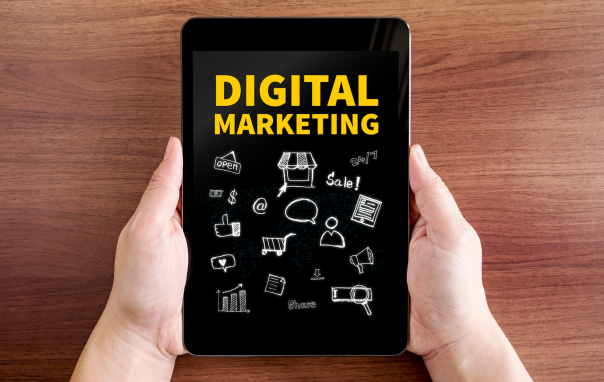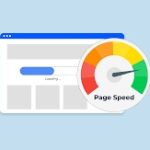A Good Marketing Strategy Outlines the Overall Value Proposition
A powerful advertising campaign is essential for businesses looking to increase brand awareness, attract potential customers, and drive sales.
In the fast-paced world of digital marketing, understanding how to craft effective ads that resonate with your audience can make all the difference.
This blog post will cover seven crucial ad marketing tips to help you develop compelling advertising campaigns using various digital marketing strategies and platforms.
By following these tips, you’ll be equipped to create ads that capture attention and align with your business objectives and overall marketing strategy and goals.
LinkLumin: Elevating Your Advertising Game
LinkLumin is a cutting-edge ad agency dedicated to helping businesses craft compelling ad campaigns that resonate with their target audiences. LinkLumin’s marketing strategy covers all social media platforms.
With a focus on innovation and precision, LinkLumin leverages the latest digital marketing tools and strategies to ensure that your advertising efforts yield maximum returns. Whether you’re looking to increase traffic to your website, generate leads, or boost sales, LinkLumin’s team of experts can guide your brand through the complex world of digital advertising.
LinkLumin ensures your business stands out in an increasingly competitive marketplace by providing valuable insights and personalized marketing strategies.
Leverage Social Media Ads for Maximum Reach
Social media advertising is one of the most powerful tools in a marketer’s arsenal. With billions of users active on platforms like Facebook, Instagram, LinkedIn, and Pinterest, businesses can reach a massive audience through targeted social media ads. Here’s how to make the most out of your social media advertising campaigns:
Know Your Platforms
Each social media advertising platform has unique strengths and user demographics, making it crucial to understand which social advertising platforms your target audience frequents the most. For example:
Facebook:
With over 2.8 billion active users, Facebook is ideal for reaching a broad audience. It’s particularly effective for B2C marketing and offers robust targeting options based on user interests, demographics, and behaviors.
Instagram:
A highly visual platform, Instagram is perfect for brands leveraging striking visuals and videos to engage users. It’s especially popular among younger audiences and is ideal for fashion, beauty, and lifestyle brands.
LinkedIn:
As a professional networking site, LinkedIn is best suited for B2B and marketing teams. Use it to target professionals based on industry, job title, and company size.
Pinterest:
This platform is great for brands with a strong visual appeal. It’s particularly effective for driving website traffic and is popular among users interested in DIY, fashion, home décor, and food.
By understanding each platform’s strengths, you can tailor your ad spend and content marketing strategy to resonate more effectively with your target audience.
Experiment with Different Ad Formats
Social media platforms provide a diverse selection of ad formats to accommodate a variety of marketing objectives. Some of the most effective ad types include:
Story Ads:
These full-screen, vertical ads appear between stories on platforms like Instagram and Facebook. They are great for quick, attention-grabbing messages and can include interactive elements like polls and swipe-up links.
Carousel Ads:
This format enables the presentation of multiple images or videos within a single advertisement, which is particularly useful for emphasizing various products or narrating a multi-part narrative.
Collection Ads:
Available on Facebook and Instagram, these ads feature a primary video or image with a series of smaller images below, making it easy for users to browse products and shop directly from the ad.
Playable Ads:
Playable ads are used mainly in mobile games and apps. They allow users to interact with a demo of your app or game before downloading. This format is highly engaging and effective for app marketing.
By experimenting with various ad formats, you can identify the format that most effectively connects with your audience, thereby boosting engagement and conversion rates.
Monitor Social Media Advertising Costs
The cost of social media advertising can vary significantly based on factors like audience targeting, ad placement, and bidding strategy. It’s important to:
Set a Budget:
Define your daily or campaign budget to avoid overspending. Most platforms allow you to set maximum limits, giving you control over your ad spend.
Monitor Performance:
Use the analytics tools provided by the platforms to track the performance of your ads. Look at metrics like Cost Per Click (CPC), Cost Per Acquisition (CPA), and Return on Ad Spend (ROAS) to evaluate your campaign’s effectiveness.
Optimize for Cost Efficiency:
If a particular ad set is underperforming, don’t hesitate to pause it and reallocate your budget to better-performing social ads elsewhere. Testing different creatives, audiences, and placements can help optimize your social media advertising cost.
Using social media ads strategically can boost your brand’s visibility and engagement across multiple social media channels, driving meaningful results for your business.

Craft a Comprehensive Marketing Strategy
A well-defined and effective marketing strategy is crucial for the success of your advertising campaigns. It is a roadmap that outlines your business objectives and guides your marketing efforts. Here’s how to build a solid marketing strategy:
Define Your Marketing Goals
Before launching any digital marketing campaign, clearly define what you hope to achieve. Common marketing goals include:
Increasing Brand Awareness:
Use broad-reach campaigns to get your brand in front of as many people as possible.
Generating Leads:
Create ads encouraging users to sign up for newsletters, download resources, or complete forms, collecting valuable contact information.
Driving Sales:
Use targeted ads to promote products or services directly, guiding users to purchase.
Having clear out marketing plans and objectives will help you measure the success of your campaigns and ensure that your marketing efforts are focused and effective.
Develop a Marketing Plan
Your marketing plan should outline your overall marketing strategy and tactics to achieve your goals. This includes:
Target Audience Identification:
Define who your ideal customer is, including demographics, interests, and pain points.
Competitive Analysis:
Study your competitors to understand what works for them and identify gaps you can exploit.
Campaign Calendar:
Plan your campaigns throughout the year, aligning them with product launches, seasonal trends, and key business objectives.
A detailed marketing plan will help you stay organized and ensure all marketing efforts are coordinated and aligned with your business objectives.
Outline Your Marketing Strategies
Once your marketing plan is in place, break down your marketing strategies into actionable steps. This could include:
Content Marketing:
Develop a calendar with blog posts, videos, and social media updates to keep your audience engaged and informed.
Email Marketing:
Create segmented email lists and personalized campaigns to nurture leads and convert them into customers.
Paid Media:
Allocate a portion of your budget to paid ads, including social media ads, Google Ads, and display advertising. This will help you reach a wider audience and drive immediate results.
Creating a solid marketing strategy outline ensures all your other marketing plans and efforts align and work toward your desired outcomes.
Understand Your Target Audience
Understanding your target audience is the cornerstone of any successful ad campaign. Your advertising efforts could fall flat without knowing who your ideal customer is. Here’s how to gain a deeper understanding of your audience:
Conduct Market Research
Market research involves gathering data about your target audience better to understand their needs, preferences, and behaviors. You can use tools like:
Surveys and Questionnaires:
Collect feedback directly from your audience to learn about their preferences, pain points, and buying behavior.
Social Media Analytics:
Platforms such as Instagram and Facebook offer valuable information regarding the demographics of your followers, such as their age, gender, and location.
Google Analytics:
Use this tool to analyze your website traffic and understand where your visitors are coming from, what pages they visit, and how long they stay.
Market research will provide valuable insights to inform your marketing strategies and help you create more effective advertising campaigns.
Create Detailed Audience Segments
Audience segmentation involves dividing your target audience into smaller, more manageable groups based on shared characteristics. Common segments include:
Demographic Segmentation:
Group users based on age, gender, income, education, and occupation.
Behavioral Segmentation:
Segment users based on their behavior, such as purchase history, product usage, and brand loyalty.
Psychographic Segmentation:
Focus on users’ interests, lifestyles, values, and personality traits.
Creating detailed audience segments allows you to tailor your marketing messages to each group’s unique needs and preferences, increasing the relevance and effectiveness of your campaigns.
Utilize Customer Feedback
Customer feedback is a goldmine of information for understanding your target audience. Here’s how to gather and use it effectively:
Surveys and Polls:
Use surveys and polls to gather feedback on your products, services, and overall customer experience. Tools like SurveyMonkey and Google Forms can help you collect responses easily.
Social Listening:
Monitor social media channels to see what people say about your brand and industry. Platforms like Hootsuite and Brandwatch can help you track mentions and sentiment.
Customer Reviews:
Analyze reviews on platforms like Google, Yelp, and Amazon to identify common themes, pain points, and areas for improvement.
Using customer feedback to refine your marketing tactics ensures that your campaigns resonate with your audience and effectively address their needs.
Maximize Your Ad Spend with Google Ads
Google Ads is a powerful platform that allows you to reach potential customers through search engines and display networks. By maximizing your ad spend on Google Ads, you can drive significant traffic to your website and increase conversions.
Choose the Right Keywords
Keyword research is the foundation of a successful Google Ads campaign. Here’s how to choose the right keywords:
- Use Keyword Tools: High-volume, low-competition keywords that are pertinent to your business can be identified with the assistance of tools such as Google Keyword Planner, SEMrush, and Ahrefs.
- Focus on Long-Tail Keywords: Long-tail keywords are more specific and have lower competition, making them easier to rank for. For example, instead of targeting “shoes,” target “affordable running shoes for women.”
- Analyze Competitor Keywords: Look at the keywords your competitors are bidding on. This can provide insights into what’s working in your industry and help you identify opportunities.
Choosing the right keywords ensures that your ads are shown to users actively searching for products or services like yours, increasing the likelihood of conversions.
Optimize Your Ad Copy
Ad copy plays a crucial role in attracting clicks and driving conversions. Here are some tips for writing compelling ad copy:
- Highlight Benefits, Not Features: Focus on how your product or service solves a problem or meets a need. For example, instead of saying, “Our software has X feature,” say, “Save time and increase productivity with our software.”
- Include a Strong Call-to-Action (CTA): Encourage users to take action with clear, compelling CTAs like “Buy Now,” “Sign Up Today,” or “Get a Free Quote.”
- Use Ad Extensions: Google Ads offers several ad extensions, including site link extensions, call extensions, and location extensions, that can enhance your ad’s visibility and provide additional information to users.
Optimizing your ad copy ensures that your ads stand out in organic search results and encourage users to take the desired action.
Monitor and Adjust Your Campaigns
To maximize your ad spend, it’s important to monitor and adjust your Google Ads campaigns continually. Here’s how:
- Set Up Conversion Tracking: Use conversion tracking to measure users’ actions after clicking on your ads, such as purchasing or signing up for a newsletter.
- Analyze Performance Metrics: Monitor key metrics like Click-Through Rate (CTR), Cost Per Click (CPC), and Conversion Rate. This will help you identify which ads are performing well and which need improvement.
- Make Data-Driven Adjustments: Based on your performance analysis, adjust your bids, keywords, and ad copy to improve your campaign’s effectiveness.
By effectively managing your Google Ads campaigns, you can increase your visibility on search engines and drive more qualified traffic to your website landing page.

Create Engaging Content for Social Media Campaigns
Content is king in the realm of social media marketing. Your content must be engaging, relevant, and visually appealing to capture your audience’s attention. Here’s how to create compelling content for your social media campaigns:
Use High-Quality Visuals
Visual content is more likely to be shared and engaged on all social media platforms. Here’s how to create high-quality visuals for your campaigns:
- Invest in Professional Photography: High-quality images can make your brand look more professional and appealing. Consider hiring a professional photographer for product shots and lifestyle images.
- Leverage Video Content: Video is one of the most engaging forms of content on social media. Create short, informative, and visually appealing videos that showcase your products, tell your brand story, or provide value to your audience.
- Use Design Tools: Tools like Canva and Adobe Spark allow you to create stunning graphics, infographics, and social media posts, even if you don’t have a design background.
High-quality visuals help your content stand out in users’ feeds, increasing engagement and brand recall.
Leverage Video Ads
Video ads are an excellent way to convey your message quickly and effectively. Here are some tips for creating impactful video ads:
- Keep it Short and Sweet: Most users have short attention spans, so keep your videos under 30 seconds. Focus on delivering your key message quickly and clearly.
- Use Captions: Many users watch videos without sound, especially on mobile devices. Adding captions ensures your message is still conveyed even if the sound is off.
- Include a Clear CTA: Like with text ads, your video ads should include a clear CTA that guides users on what to do next, whether visiting your website, signing up for a newsletter, or making a purchase.
Using creative strategy and leveraging video ads, you can capture your audience’s attention and communicate your message more effectively.
Create Interactive Content
Interactive content encourages users to engage with your brand and can significantly boost your social media campaign’s performance. Some examples of interactive content include:
- Polls and Quizzes: Create polls and quizzes related to your industry or products. They’re fun for users and provide valuable insights into their preferences and opinions.
- Contests and Giveaways: Run contests and giveaways to increase engagement and attract new followers. Ask users to tag friends, share your post, or submit user-generated content for a chance to win.
- Live Videos: Use live videos to interact with your audience in real time. Host Q&A sessions, product launches, or behind-the-scenes tours to strengthen your connection with your followers.
Interactive content boosts engagement, helps you reach new audiences, and builds a community around your brand’s products.
Utilize Different Ad Formats to Boost Engagement
Different ad formats serve different purposes and can help you achieve various marketing goals. By experimenting with different types of ads, you can find out what works best for your audience and business. Here’s an overview of some effective ad formats:
Carousel Ads
Carousel ads allow you to up to ten images or showcase multiple images or videos within a single ad, making them ideal for:
- Product Showcases: Highlight each carousel card’s products, features, or benefits.
- Storytelling: Use a series of images or videos to tell a story, taking users through your brand’s history, mission, or product development process.
- Step-by-Step Guides: These guides walk users through a process, such as using your product or signing up for your service.
Carousel ads are versatile and engaging, making them a great choice for various marketing objectives.
Collection Ads
Collection ads are designed to showcase a collection of products in a visually appealing way. They are particularly effective for e-commerce businesses looking to:
- Increase Product Visibility: Display multiple products in a single ad, making it easy for users to browse and shop directly from the ad.
- Promote New Collections: Launch a new collection or product line with a visually stunning ad that captures users’ attention and encourages them to explore your offerings.
Collection ads make it easy for users to discover other brands and purchase products, driving higher engagement and sales.
Follower Ads and Spotlight Ads
Follower and spotlight ads effectively increase brand awareness and engagement with existing audiences on platforms like LinkedIn. Use them to:
- Grow Your Audience: Follower ads can help you increase your social media following by promoting your page to users who may be interested in your content.
- Highlight Key Products or Services: Spotlight ads allow you to feature a specific product, service, or event, drawing attention to what’s most important for your business.
These ad formats are ideal for building a strong presence through a social media campaign, ads on professional networking platforms and increasing engagement with your brand.

Measure and Optimize Your Marketing Campaigns
No marketing campaign is complete without thorough measurement and optimization. You need to track key metrics and adjust as needed to ensure your advertising efforts are effective. Here’s how:
Set Up Analytics Tools
Analytics tools are essential for tracking the performance of your campaigns. Some tools to consider include:
- Google Analytics: Track website traffic, user behavior, and conversion rates. Set goals and events to measure specific actions, such as form submissions or product purchases.
- Social Media Analytics: Use the built-in analytics tools on platforms like Facebook, Instagram, and LinkedIn to track engagement, reach, and demographic data.
- Ad Platform Analytics: Google Ads, Facebook Ads, and other ad platforms provide detailed analytics that can help you monitor your ad performance and optimize your campaigns.
The right analytics tools allow you to track your entire campaign side’s success and make data-driven decisions.
Analyze Sales Data
Sales data provides valuable insights into how your ad campaigns impact your bottom line. Here’s how to use it effectively:
- Track Revenue and ROI: Use tools like Google Analytics e-commerce tracking to monitor your revenue and calculate your return on investment (ROI) for each campaign.
- Identify Top-Performing Products: Analyze your sales data to see which products or services sell the most. This can inform your future marketing strategies and ad campaigns.
- Monitor Customer Lifetime Value (CLV): Calculate the average revenue a customer generates over their lifetime. Use this data to determine how much you can afford to spend on acquiring new customers.
Analyzing sales data helps you understand the direct impact of your marketing efforts on your business’s financial performance.
Optimize Your Campaigns
Optimization is an ongoing process that involves adjusting based on the performance data you collect. Here’s how to optimize your campaigns effectively:
- Test Different Variables: Run A/B tests to compare different versions of your ads, landing pages, and email campaigns—test variables like headlines, images, CTAs, and audience targeting to see what performs best.
- Reallocate Your Budget: If certain campaigns or ad sets outperform others, consider reallocating your budget to maximize your returns.
- Refine Your Targeting: Use the insights you gain from your analytics and sales data to refine your audience targeting. Focus on the segments most likely to convert and engage with your brand.
Regularly measuring and optimizing your marketing campaigns can ensure your advertising efforts are as effective as possible.
Wrapping Up – Fructifying Marketing Efforts
Creating powerful advertising campaigns requires a strategic approach incorporating various marketing tactics and digital marketing tools.
By leveraging social media ads, crafting a comprehensive marketing strategy, understanding your target audience, and utilizing platforms like Google Ads, you can maximize your ad spend and achieve your business objectives.
Remember to create engaging content, experiment with different ad formats, and continually measure and optimize your social advertising campaigns. With these seven ad marketing tips, plus a multi-channel marketing approach, you’ll be well on your way to crafting impactful advertising campaigns that drive results.
If you need help implementing these strategies or want to learn more about how LinkLumin can elevate your brand’s advertising efforts, please get in touch with our team of experts.
Together, we can create powerful advertising campaigns that help your business thrive in today’s competitive digital landscape.
Tags




